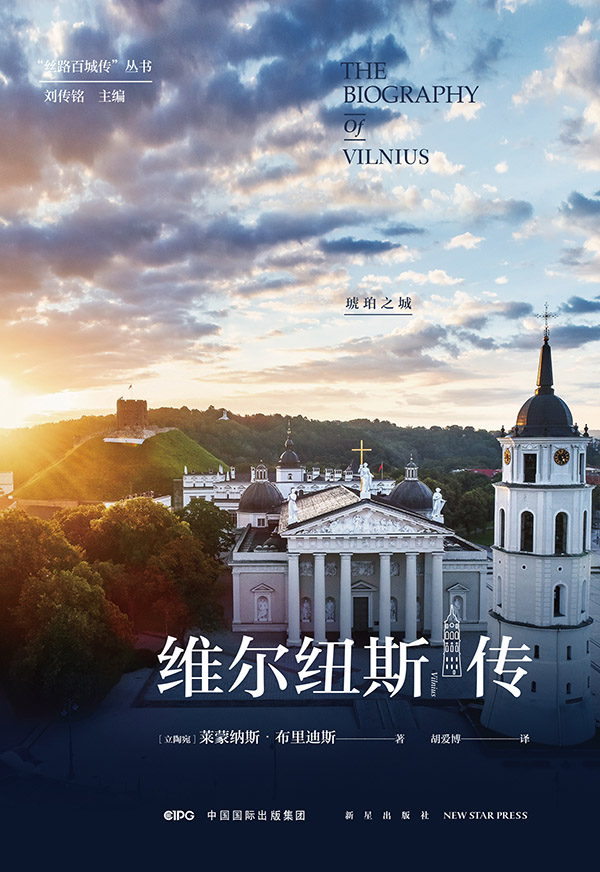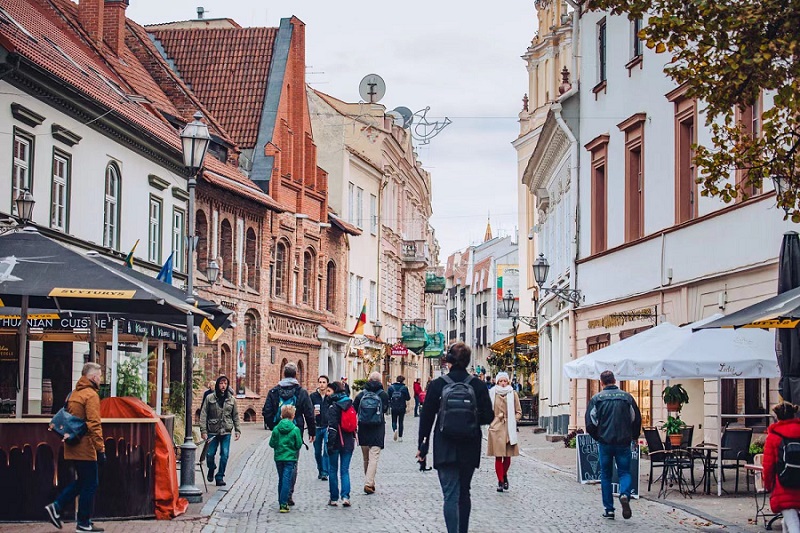Vilnius: The Pulse of Europe

China and Lithuania will celebrate the 30th anniversary of the establishment of diplomatic relations on September 14th, 2021. In this context, China Pictorial invited Diana Mickevičienė, Lithuanian Ambassador to China, for an exclusive interview to share stories about Vilnius and prospects for China-Lithuania cooperation. For anyone curious to know more about Vilnius, Ambassador Mickevičienė recommends The Biography of Vilnius: City of Strangers, which has a Chinese translation published by New Star Press.

Napoleon, Dostoyevsky, Stendhal, and Tolstoy: these voices – among others equally compelling though lesser known – reveal the essence of Europe in their narratives of encounter with the threshold city of Vilnius in the book The Biography of Vilnius: City of Strangers. Lavishly illustrated and carefully researched, the book is a veritable hall of mirrors, which yields an illuminating vision of Vilnius and an exceptional window on Europe. courtesy of New Star Press
China Pictorial: Last year, the China Railway Express delivered anti-epidemic supplies to European countries hit by COVID-19, and Vilnius became an important distribution hub. What role will Vilnius play in the Belt and Road Initiative in the future?
Mickevičienė: If you look at our geographical location, we’re always at a crossroads of countries, so connecting people has become part of our DNA. Our culture has accumulated a lot from the Slavs, Germanic tribes, and even the Tatars, an indigenous ethnic minority descended from the empire of Genghis Khan. Lithuania and China were neighbors during the 14th and 15th centuries.
Vilnius plays a central role today in connecting people and countries. The role we play is naturally given by our geographical location and is of flexible and multi-cultural nature. Our logistics and transportation sector contributes about 15 percent of our GDP. In terms of costs and other factors, we clearly offer some of the best solutions.

China Pictorial: Vilnius boasts an impressive concentration of Gothic, Renaissance, Baroque, and other classical buildings. Many modern high-rises also sprouted up in the 20th century. How does the city balance its aesthetic value with economic development?
Mickevičienė: I think we should be very particular about safeguarding the old town. Vilnius is protected by UNESCO. It is valuable to the world because the Old Town of Vilnius is one of the largest surviving medieval old towns in Eastern Europe. You cannot build a new structure within the limits of the Old Town. The city will engage in extensive discussions on locations for new modern developed zones. We seek a delicate balance because a high-rise even blocks away can destroy a landscape. We’re very proud that we allow our citizens to have a say in development. The government and city authorities listen to the citizens to ensure that they are the masters of the city.

A Polish-Lithuanian style Catholic church in Vilnius. The old town of Vilnius has preserved many Catholic, Orthodox, Protestant, and Jewish churches. by Laimonas Ciūnys
China Pictorial: A consistent highlight of trips to Vilnius is the Republic of Užupis. Could you talk more about this bohemian district?
Mickevičienė: Užupis means “beyond the river” in the Lithuanian language, in reference to the Vilnia River. That area has been popular with artists for some time and compared to Montmartre in Paris. Many structures there were built centuries ago for industrial purposes. When we got independence 30 years ago, many artists moved in. The picturesque and well-situated place has inspired extensive art emerging from chaos.
The district declared itself an “independent republic” in 1998. It upholds the spirit of freedom and independence. Užupis Republic has a constitution, a president, and a 10-member army. The symbol of Užupis is a palm with a hole in it. You use your palm to give and take, and the hole means you don’t keep money or other resources for yourself. Whoever arrives here, rich or poor, is asked to follow the philosophy. Everyone is free to express himself, and no one should fight over differences. That is somewhat of a sacred place. It started off as a sort of artistic joke, but everyone respects its values now. You need to leave your fame and fortune at the door to become part of that interesting community.

The Hill of Three Crosses, one of the tallest points in Vilnius. Legend goes that seven Franciscan friars were beheaded atop this hill. Wooden crosses were erected in the location as early as the 17th Century. Opposite the hill is Castle Hill overlooking the city of Vilnius. by Laimonas Ciūnys
China Pictorial: Lithuania has experienced many ups and downs in history. How did the country build its national identity and resilience?
Mickevičienė: Our national identity consists of many layers, but one important aspect is the Lithuanian language, a very small but unique language that has an authentic structure of an archaic European language. Ordinary people have preserved so much of the language because they like keeping it authentic, traditional, and classical. Urbanites tend to make things simpler and easier. Educated elites attempted to introduce other languages including the Slavic language of the former Grand Duke and Latin when it was central to western European culture, later substituted by Polish and French languages.
What subsequently happened was very important for European and even global culture: Lithuania and Poland merged in one country under the first democratic constitution in Europe in 1791. It was, unfortunately, very short-lived because later we were occupied and divided by Russian, Prussian, and Austrian empires. It became a catastrophic situation for almost 200 years, but the spirit of that democratic constitution, which was probably overly ambitious for the era, has survived. This year, Lithuania will celebrate the 230th anniversary of the constitution shared with Poland.
Lithuania contributed different cultural elements to the world in different eras. We are very open to receive the best the outside has to offer, which keeps us resilient to external trials and tribulations.

A time-honored street in Vilnius, capital of Lithuania. Vilnius, a city with historical profundity and attractive cultural flair, celebrated its 698th birthday on January 25, 2021. courtesy of Embassy of Lithuania in Beijing, China
China Pictorial: This year marks the 30th anniversary of the establishment of diplomatic ties between Lithuania and China. In what areas do you think the two countries can promote cooperation?
Mickevičienė: I think the two countries have achieved a lot in various areas. During the pandemic, the logistics flow between the two countries actually increased. We’re happy to see that even COVID-19 couldn’t disrupt trade.
But I have been most inspired by developments in cultural and art exchanges. It is difficult to find a Lithuanian theater troupe that has not been to China. Our performances in China have all been very well-received, and Lithuanian performers are always impressed by the passion of the Chinese audience. Chinese patrons appreciate art and are eager to learn. A Lithuanian director is even organizing joint performances with a Chinese team while the pandemic prevents travel. The project will be quite different and fuse the best each country has to offer.
I think the best way to celebrate the 30th anniversary of the diplomatic relationship is to strengthen cultural and art links and promote trade and transportation cooperation between the two countries.